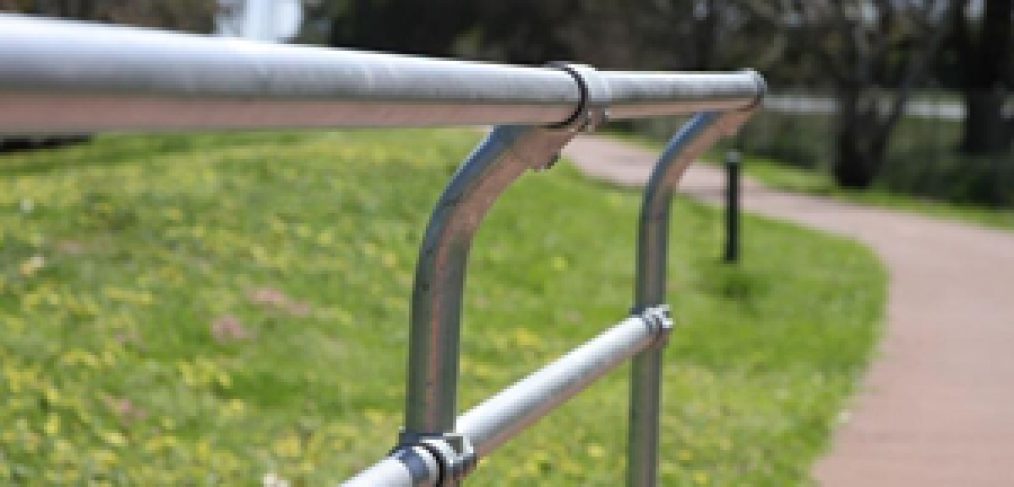
The Meshstore guide to concrete anchors
So you've decided to build a handrail system at home. Firstly, congratulations on choosing Monowills, you've made an excellent decision. Secondly, have you considered how you'll be installing it?
When it comes to concrete anchoring, there are a few different methods you can choose from. Each has benefits and drawbacks, so you'll need to figure out the best method for you.
Before we take a look at the three key methods of anchoring, where they work best, and what to avoid during installation, there are two things you need to consider. The first is your safety gear, since you may be dealing with some abrasive materials and strong chemicals, be sure to have your gloves, goggles and boots on hand. Secondly, there are technical standards that need to be met. While the Monowills range is designed for compliance, requirements for anchor systems are outlined in SA TS 101. For more information, you should refer to this document from Standards Australia.
Now, the part you came for:
1. Cast-in anchors
Cast-in anchors will typically require the most work of the three options, but if you're undertaking a larger project and will be pouring new concrete on which to base your handrail system, cast-in could be the way for you. Now, there are two key methods through which this can be done.
The first involves casting your anchor bolts into the concrete. In this scenario, you should use L or J bolts to prevent pullout. Once your concrete has cured, you'll be left with bolts protruding from the concrete surface that you can then attach the baseplate of your stanchions. In this application, you would need to ensure your cast-in anchors were spaced exactly right.
The second method for cast-in anchors is to use a channel. These are typically used in large scale construction where the anchors need to handle tremendous loads. Think of this as a small, metal trough with a lip on the inside. This needs to be installed so that the top of the channel is flush with the surface of your concrete, running parallel to your handrail balustrades. Once the concrete has set, you can slide T-bolts into the channel, and from there, attach them to the stanchion baseplates. The benefit here is you only need to align one axis.
As previously stated, this application is really only on the cards if you're putting in new concrete at the same time as your handrail. You'll need to be a little more precise with placing the anchors, but the benefit is that cast-in anchors perform extremely well.

2. Post-installed mechanical/expansion anchors
The biggest drawcard for this type of anchoring solution is that it's post-installed, meaning this is a sound anchoring method for quick installation of a handrail system into existing concrete. Mechanical, or expansion, anchors are those that expand when the torque is adjusted.
When you're installing a handrail, this is likely the most straightforward method. It starts with lining up where your base plates will be and drilling the appropriate holes. Depending on the size and nature of your handrail, you may even be able to assemble the whole system and "drop" it into place. When drilling concrete, you'll get the best performance (and least resistance) out of a hammer drill. You should also be mindful that there may be rebar or other embedded objects in the concrete. Often, carbide headed drill bits can cut through rebar, but it might be worth investing in a diamond drill bit.
Once you've drilled the holes, they must, and this bears repeating, they absolutely MUST be cleaned out properly. Failure to do so means that you'll be expanding the anchor to connect with loose dust, which is a pretty great way to ensure the anchor will pull out under strain. Once you've cleaned the holes, you only need to insert the anchors through the stanchion base plate and apply the recommended torque.
This method is fairly easy to do and offers a high level of strength. You might need to hire some tools, but the payoff is a huge amount of time saved.

3. Chemical anchors
Chemical anchors work in a very similar way to a post-installed mechanical anchor. The difference being, instead of using an expansion anchor and adjusting the torque, you can use standard anchor rods (or screws) which fix themselves in the concrete via the injection of a chemical adhesive.
You'll follow all the steps outlined above, right up to the step where you thoroughly clean all dust out of the hole (do not skip. Ever). If possible, we recommend using a roughening tool to use on the holes. This will give them an even internal surface which the chemical will bond to more efficiently than a smooth surface.
Once the holes have been cleaned, you can inject your mortar into the holes. You will be able to pick up the right adhesive from your local hardware store, but make sure you check it's suitable for concrete anchors. After you've dropped your anchor rods in, give them a quick turn to ensure that the adhesive distributes evenly across the thread. From here, you only need to wait until the chemical has cured before you can anchor your base plates with the simple tightening of a nut.
There are two things you have to remember for this, and both rely on the instructions that come with your adhesive. The first, is that you should under no circumstances use less of the chemical mortar than the directions outline. The second, is that you must leave the chemical to cure as per the instructions. Chemical anchors take a little more time because of curing, however in most applications the bond strength is extremely high.
So there it is, the Meshstore guide to concrete anchors. For any further questions or concerns, speak to a member of our team.



